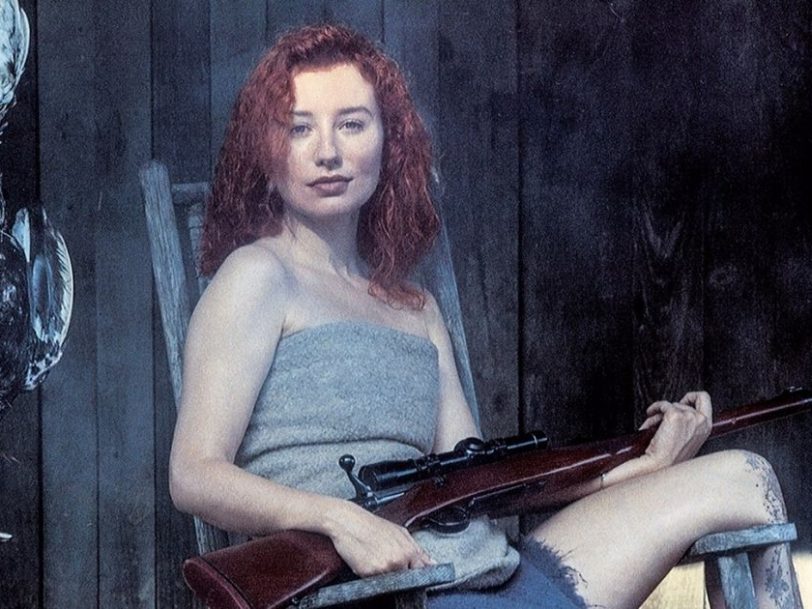“There comes a time in every musician’s development when you reach a crossroads,” wrote Tori Amos, in her liner notes for A Piano: The Collection, “and in order to develop as a composer and a creative force, you may have a take a road less travelled by the commercial music industry. From where I sit right now, in this second, I can honestly say that I do not know where I would be if I had not made Boys For Pele.”
Released in the UK on 22 January 1996, the singer-songwriter’s experimental third album marked a turning point in her path as an artist. If it was risky, it was a risk that paid off. Boys For Pele debuted at No.2 on both the US Billboard 200 and the UK albums chart, making it Amos’ greatest simultaneous transatlantic debut and the highest-charting US debut of her career to date. Nominated for a Best Alternative Album Grammy, the record also featured some of the best Tori Amos songs, such as Hey Jupiter, Caught A Lite Sneeze and Professional Widow. The last of the three, in the guise of US DJ Armand Van Helden’s remix, hit the No.1 spot in the UK with its unforgettable lyrics resounding in clubs and parties throughout the decade – “Honey bring it close to my lips, yeah/It’s gotta be big, it’s gotta be big.”
Listen to ‘Boys For Pele’ here.
“My world exploded, and I needed to explore different kinds of music”
With her first two albums, Little Earthquakes and Under The Pink, Amos had won a devoted fanbase as well as scored a few hits, but the sprawling, richly varied and wildly inventive Boys For Pele solidified her reputation as an artist unafraid to take risks. “My world kind of exploded,” Amos told Stereogum of the time after her first two albums, “and I think – if I’m honest with you – people in the industry, they want you to make similar records and work with producers that will give you a commercial record. Because Under The Pink was a successful album, I was feeling like I had done that, and I needed to explore different kinds of music.”
Amos’ personal life had also seen significant change. In 1994, she split from her long-term partner Eric Rosse, who co-produced her first two albums. “I guess I wanted to carve out my own place,” she told Stereogum. As the sole producer on her new record, Amos decided to record the bulk of the experimental album – which featured more than 75 musicians, from the London Symphonia, gospel choirs, Caribbean percussionists and Louisianan brass bands – in an Irish church. She was struck by “the idea of speaking my truth, no censorship, in a place that did not honour anyone’s truth unless it was the church’s truth”, as she explained to The Cincinnati Post.
“It’s going after those programs of the feminine”
Inspiration for the album’s title and concept struck further afield, while on a visit to Hawaii’s Big Island. There, Amos learned about the volcano and fire goddess Pele, who demanded sacrificial male flesh: “The boys are those who have brought me to my fire with what they have or haven’t given me,” she explained. In a further liner note for A Piano, she added: “Maybe I was envious that men could traverse and pioneer different tastes for themselves. They could plug in without repercussions. So finally, instead of sneaking around and trying to steal their fire, I let myself into that vastness.”
Vastness is the word. In Boys For Pele, Amos seems to tap into something elemental – two of the songs, Marianne and Not The Red Baron, were downloaded directly “from the muses”, as the artist puts it, and what we hear on the record is Amos playing them for the very first time.
With 18 sometimes sketch-like tracks, the album is significantly longer than her first two records, and Amos has spoken of the songs as “fragmented demons of womanhood”. Like much of the record, Beauty Queen/Horses, the opener, combines the delicate with the primal. As Amos – herself a homecoming queen at Richard Montgomery High in Rockville, Maryland – said of the track in an interview with B-Side magazine, “She’s a beauty queen, and that’s not enough, because it never is… So it’s going after those programs of the feminine, going after them, going after them.” She starts that journey – or quest for healing – on horseback: “And maybe I’ll find me a sailor/A tailor/And maybe together/We’ll make mother well.”




